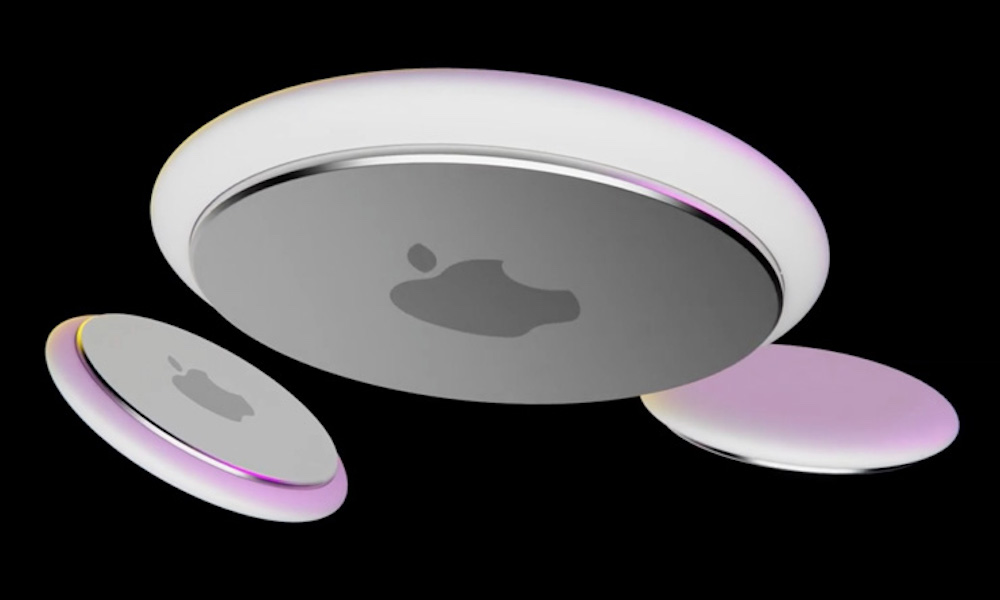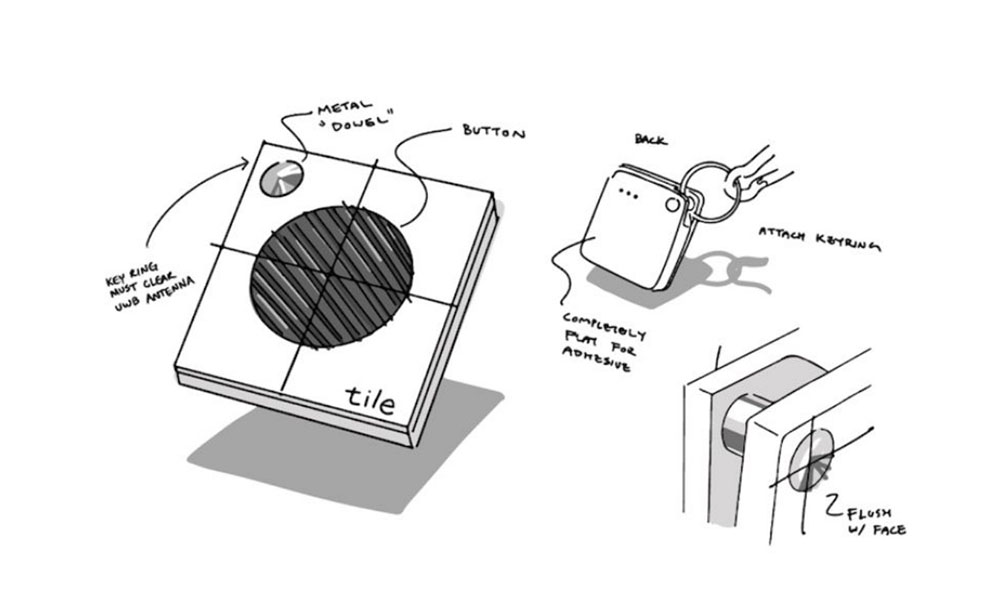Tile Will Take on Apple’s AirTags Head-to-Head with Ultra-Wideband Support
 Credit: GunHo Lee via MensXP
Credit: GunHo Lee via MensXP
Toggle Dark Mode
There’s been a lot of evidence lately that Apple has its long-awaited AirTags ready to go and is simply waiting for the right moment to actually release them, but now it’s looking like one of its biggest competitors might just beat Apple to the punch.
According to a new report by TechCrunch, Tile, which has become the most popular brand in the world of Bluetooth item tracking tags, has been preparing to up its game with a new product that will leverage the revolutionary Ultra-Wideband technology (UWB) that we’ve been hearing so much about since Apple added it to the iPhone 11 last year in the form of its new U1 chip.
While other handset makers are struggling to catch up, there’s no doubt that Apple’s entire iPhone lineup is ready to go for Ultra-Wideband tags, but so far, the technology has been used for little more than more accurately targeted AirDrop transfers and a HomePod handoff feature that’s not even available just yet.
Meanwhile, Apple also baked the U1 chip into its Apple Watch Series 6, but at this point it appears to be completely inert in the wearable device, reserved entirely for some future purpose.
Of course, with everything that we’ve been hearing about AirTags, it’s pretty clear that Ultra-Wideband technology is going to be an integral part of tracking lost items, since it narrows the accuracy significantly — Bluetooth tracking might let you figure out which room your lost item is in, but UWB will tell you exactly which couch cushion it’s tucked under. In fact, code found in iOS 13 back in late 2019 revealed that Apple is likely working to incorporate augmented reality to help you “see” exactly where your lost item is using your iPhone camera.
So there’s no doubt that Apple’s AirTags are poised to be a game changer, but it looks like Tile could be getting ready to beat Apple to the punch. TechCrunch notes that Tile’s solution promises all the same things that we’ve been hearing about AirTags, including not only UWB support, but also the same augmented reality features within the Tile mobile app.
The internal concept artwork for the device suggests that the new device will likely maintain the same square design as Tile’s other small trackers, with a square shape and a centre button, along with a flat back for mounting to surfaces and a hole for attaching to things like keychains.
According to sources familiar with Tile’s plans, the company is expecting to release the new tracking tags later this year with support for both iOS and Android devices, although it also plans to continue selling its Bluetooth-only trackers for those who don’t have a UWB-enabled smartphone — which for Apple users only means anything older than an iPhone 11. It’s less clear whether the UWB version will be backward compatible with non-UWB phones, but it seems likely since Bluetooth is still used for the initial tracking, with UWB only kicking in to narrow down the location more precisely.
Meanwhile, rumours have been swirling for a few weeks now that Samsung, which is one of the first smartphone makers to embrace UWB on the Android side, is also working on its own “SmartTag” tracker, which lines up with the company’s official plans to bring UWB to a new “Find” application within its SmartThings ecosystem.
What’s Apple Waiting For?
Although it may be starting to seem that Apple is blowing its lead in this market, it’s also a company that isn’t usually all that concerned about being first out the door with a new technology, and it’s obviously biding its time for a reason.
Most reports have suggested that Apple is aiming for a March launch of AirTags, which means that they could still conceivably beat Tile and Samsung to market, and leaker Jon Prosser suggested earlier this week that Apple is simply waiting until the global health pandemic calms down to allow AirTags to make a bigger splash.
It’s a theory that makes some sense, since right now there isn’t much of a market in the middle of a lockdown for tags that are primarily designed to help you locate items you’ve lost outside your home.
However, that may also only be part of the reason, and the rapid rise of AirTags competitors could actually be exactly what Apple is waiting for in order to head off antitrust concerns. Last year Tile raised concerns to congress about AirTags even though they’re complete “vapourware” at this point, and has even gone so far as to file a formal antitrust complaint against Apple with the European Union.
All of this sabre-rattling by Tile was in early 2020, so when Apple announced at WWDC that it would be opening up its Find My network to third-party developers it’s pretty hard to believe that was merely a coincidence; even though Apple often thumbs its nose at accusation of anticompetitive behaviour, it’s also prudent enough not to needlessly whack the hornet’s nest, especially when it’s entering a whole new product space.
Further, unlike Apple’s App Store, which is a $50 billion dollar business that accounts for at least a quarter of its overall services revenue, there’s every reason to believe that AirTags will be little more than a side business for Apple — a way to sell more iPhones and related services. This means that it has less need to dominate the market, and will probably happily welcome competition, especially if that competition plays nicely with the iPhone.
This is obviously what Apple’s Find My Network is designed to encourage, since if third-party tag manufacturers use Apple’s APIs, they’ll benefit from the wide reach of the iPhone, iPad, and Mac. The entire principle behind the Find My Network is to allow a lost item to be located via any Apple device on the planet, and with over a billion of those devices out there, it significantly increases your chances of finding something that has an AirTag or other Find My compatible tag attached.
To be clear, Apple’s approach isn’t a new one; Tile has been doing the same thing for years, but Tile’s tags can only be located by other devices that happen to have the Tile app installed and either open or running in the background. Tile claims to have sold 26 million tracking tags, but since most users buy more than one tag, the number of people with the Tile app installed is likely much less — most estimates put it somewhere around 10 million.
So in other words, Tile has less than 1% of the reach of Apple’s Find My network; the probability of your Tile tag being located near somebody else who has a smartphone with the Tile app installed (and running) is considerably lower than the likelihood that somebody nearby simply has an iPhone in their pocket, and this is where Apple’s main advantage is going to be.
Apple has almost certainly invited Tile to be part of its Find My network, but unfortunately, it’s not that simple, since as usual Apple has rules it wants developers to play by, and while it’s entirely possible that the new UWB tags Tile is working on may support Find My, it seems much more likely that Tile has declined the offer to play in Apple’s sandbox and will continue charting its own course.
Either way, however, the move could be a win for Apple, as the whole crux of Tile’s complaint isn’t just that Apple is releasing a competitive product, but that it has a home field advantage over third-party products since its own hardware can access special features and APIs. However, by opening up its UWB hardware and Find My network to third parties, Apple has taken much of the wind out of Tile’s argument. After all, Apple has offered to give other companies the same capabilities, and if they choose to decline, that’s on them.
Of course, Tile could still try to make the case that Apple’s rules are onerously restrictive and thereby anti-competitive by extension, but that’s a much harder battle to fight. Apple, of course, claims it’s not being anti-competitive, especially since it’s opening up the playing field to even more companies that otherwise wouldn’t be able to build their own location networks, but at the same time it’s a Hobson’s choice for incumbent players, as it may force them to give up their own well-established location networks, and abandon cross-platform compatibility while they’re at it — a move which could be deemed anti-competitive by itself, since it implies that Apple is using it to squeeze out the competition.
That said, Apple’s rules that we’ve heard of so far only seem to prohibit third parties from using other competing services simultaneously, which implies that companies like Tile could offer users a choice of which network to use — Apple’s or Tile’s. While that’s an unprecedented restriction for Apple to put in place, the company is likely doing it at least partly for security and privacy reasons, since it’s built its Find My Network to be extremely secure, but it’s unclear if this may just be a matter of Apple being overly cautious for the initial rollout or whether that policy is going to hold in the longer term.







